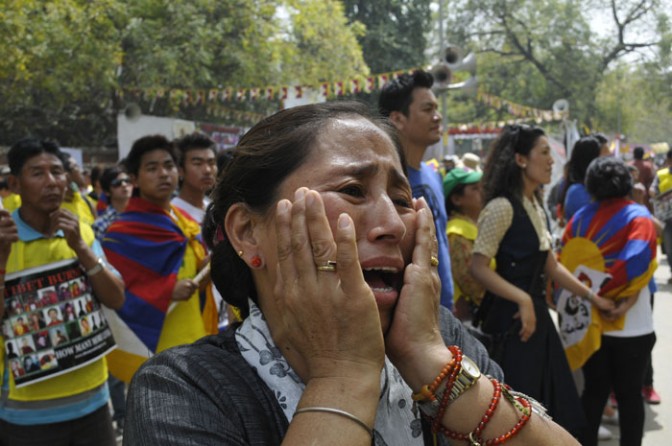 Like a butter lamp in the wind
Like a butter lamp in the wind
March 31, 2012 11:41 am. By Amitava Sanyal, Hindustan Times
By all accounts, Jamphel Yeshi was an ordinary man. His father, a farmer in the Sichuan province of east Tibet, passed away when Jamphel was young. At 22, to obey his mother’s wishes Jamphel used up some savings to bribe Chinese officials and cross over to India, leaving behind three brothers and a sister. In India he joined a four-year course at the Tibetan Transit School in Dharamsala. As a part of the course, he came to Delhi to learn computers at an academy in Pitampura. In recent months Jamphel, who had turned 27, was based in Majnu ka Tila, the Tibetan settlement in north Delhi, and was helping other newcomers with translations and finding their way around Delhi.His friends and relatives remember Jamphel as a bookish man who was better informed on Buddhist scriptures and Tibetan history than most others around him. They say he didn’t have much interest in films or music, and if there was something he couldn’t do without, it was tsampa, the barley-flour mix, and tingmo, the steamed bun. His passion was in drawing friends and acquaintances into debates on Buddhism and politics.On the night of March 25, he told an old friend that he would switch off his mobile the next day at the demonstrations against visiting Chinese President Hu Jintao. On Monday, at half past noon, he poured petrol and set himself on fire before anyone near him could react. As the fire engulfed him, he ran for about 100 metres before collapsing. He was brought to hospital with 98% burns. At 7.30 am on Wednesday, Jamphel breathed his last.
By then Jamphel Yeshi was no longer an ordinary man. With his extraordinary and sad act, he became the 31st Tibetan since February 27, 2009, to have self-immolated in protest against the Chinese ruling in Tibet. He managed to re-sharpen the world’s focus on the floundering freedom struggle. A note dated March 16, addressed to “fellow Tibetans of the three provinces” and found in Jamphel’s room, reads: “Without freedom, six million Tibetans are like a butter lamp in the world, without direction.”
We must remember that it was one act of immolation in Tunisia — by 26-year-old street hawker Mohamed Bouazizi in December 2010 — that lit the fire of the Arab Spring. Jamphel also joins the league of extraordinary people such as Nhat Chi Mai, the 34-year-old Buddhist monk in Saigon whose act in 1967 made many in the West question their countries’ Vietnam policy.
In India, immolation by one Chinnas-wamy in Trichy highlighted the Tamil agitation against the ‘imposition’ of Hindi through the passing of the Official Lan-guages Act in 1963. During the past week, Bhojya Naik and Rajamouli set themse-lves on fire in support of statehood for Telangana.
No one has claimed a programme of indoctrination behind these acts. History has treated most of them as singular acts of courage in which these people chose not to harm anyone else. Yes, they did it in a dramatic manner to attract attention to a cause that others have then reinforced using the images. But to claim that Jamphel was directly instigated by the Dalai Lama, as several Chinese officials have done, is absurd and paranoid. Jamphel was an educated Tibetan who, like so many others, was getting increasingly frustrated at being trapped between the Dalai Lama’s soft Middle Way and the hardening Chinese stance. As he saw the notion of freedom drifting farther away from his grasp, he took an extreme step to vent his frustration. No one could tell him what to do.
Forget for a moment the Dalai Lama’s official proscription against self-immolation. Take on board the observation that Tenzin Gaytso, the current Dalai Lama, is a man known for a sense of playful mischief. But then also see a Buddhist monk who has been praying for peace almost all his life. You may not believe in it, but it’s his life’s work. Then to suggest that he is capable of instigating such violent actions seems absurd. It just doesn’t fit.
http://tibet.net/2012/03/31/like-a-butter-lamp-in-the-wind/